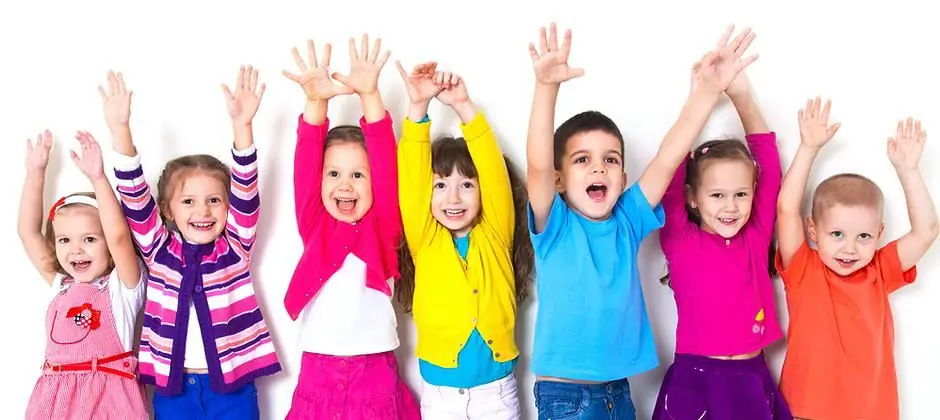2025 Author: Priscilla Miln | [email protected]. Last modified: 2025-01-22 17:55:13
Games and game exercises are very important for a child from the first years of life. They are needed for its development, perception of the outside world. Correct games help to teach the baby to think, reason, distinguish between actions, sounds, colors, and make independent decisions in the future. Play exercises for children are essential at every stage of development.
For the little ones

From the first weeks of life, to develop eye contact and perception, it is recommended to do the following exercise. Take a bright toy and show it to your baby at a distance of 70 centimeters until his eyes linger on it. Slightly shake it left and right, then move it closer to the child, and then move it away at arm's length. It is enough to carry out a lesson for 2-3 minutes twice a day, you can do it in the morning and in the evening.
Game exercises, the purpose of which is to develop auditory and motor perception, are introduced after the first month of life. To do this, hang a garland of rattles over the child so that he can reach it with his hands. To attractslightly caress her; so the baby should practice for about 7 minutes.
Change toys every five days for a month. For the development of motor skills, let the baby from the third month of life in the handles of toys of various shapes, colors and structures. You can also lay them out in front of the baby when you turn him over on his tummy so that he can see them in front of him.
Game exercises for children for the development of speech are also performed from the first months of life. Talk to your child, pronounce the syllables and sounds “aha”, “aha”, “boo-boo”, “ah-ah”, “oh-oh-oh” and others more often.
At six months you can play hide and seek with him. Covering your face with your hands, ask: “where is mom?”, And then open and say: “here’s mom!”. In a book or among toys, name animals and pronounce their characteristic sounds: "meow", "woof", "oink", "pee-pee" and others. You can use a glove with toys or special finger puppets for this.
Younger group
Didactic game exercises are held in kindergarten. They are aimed at developing the ability to distinguish sounds and switch auditory attention.

The game "What to do?". To conduct it, the children are seated in a circle and hand out flags. The teacher rings a tambourine, with a loud sound, the children wave flags, with a quiet one, they keep their hands on their knees. The teacher should monitor the correct even posture and how the kids react to the sound, increasing or decreasing the volume of the tambourine.
The game "What does it sound like?". The teacher demonstrates to the children various objects with soundaccompaniment, together with the kids calls them. After that, the teacher hides behind a screen and acts with these things, and by the sounds the children must guess what kind of object it is. Each child learns to recognize sounds, and the teacher explains that there are so many sounds in nature, and they all sound different.
The game "Fly, butterfly!". To carry it out, they take bright paper butterflies and hang them on a thread so that they are located opposite the child's face. The teacher tries to interest the children with the words: “Look how many beautiful butterflies! They seem to be living on the branches. Let's see if they can fly?" and blows on them. Then he invites the children to blow on them. This game exercise in the younger group helps to develop a long oral exhalation. The teacher needs to make sure that the children stand straight, do not raise their shoulders and exhale without getting air. They should not puff out their cheeks, exhale with their lips slightly puffed out, and blow for ten seconds, otherwise a long exhalation may make them dizzy.
The game "Eat candy". For the development of the articulatory apparatus, the teacher invites the children to depict how they eat candy. They show how they unfold and eat candy, smacking their lips and licking their lips. The purpose of this game is to develop the tongue, so you need to make sure that the children first move the tongue along the upper and then along the lower lip, imitating circular movements.
The game "Bunny says". The purpose of the exercise is to teach the correct pronunciation of words. To do this, the teacher takes a toy hare and a bag with pictures. Bunny, as it were, takes out images with animals and names themwrong, and the children have to correct it. For example: "Ishka", "Isa", "oshka". Children say: "Bear", "fox", "cat" and so on. After they correct the bunny, he repeats after them with the correct pronunciation to reinforce the result.
Middle group
Children of the middle group at the age of 4-5 years have already better developed coordination of movements, more understanding and opportunities. You can practice skills with outdoor games and game exercises.
Game "Roll the hoop". Flags are placed at different distances from each other, and hoops are distributed to the children. The task is to roll the hoop to the flag without dropping it along the way. At each stage overcome, a cardboard star is issued, and after completing the task, it is calculated who has the most of them.
Further away game. Children are given hoops and, on a signal, standing on the same distribution line, they push the hoops forward. At the place of their fall, each child marks his line. The one with the furthest mark wins.
Game "Throw - catch up". At a distance of 20-30 centimeters from the ground, a rope is pulled, and a line is marked in front of it after two meters. Children should throw the ball through the rope from this line from the prone position and catch up with it. The first person to lift the ball wins. You can complicate the task: catch up with the ball and return to the starting line by jumping over the rope along the way.

Game "Throw on". From the marked line, the children are invited to throw the ball so that it flies the farthest. If the ball is large, then it is thrown by bothhands from behind the head or from the chest, if small, then first with the right hand, then with the left.
Slippery bag game. A chair is placed in the center, children line up around it at a distance of two and a half meters. Each is given a tied bag of sand. The task is to throw it to the chair so that the bag does not fall and slip off. You need to throw from below, for each hit a point is awarded. The one with the most points wins.
Senior group
Outdoor games and game exercises in the older group help to establish contact with peers, show their talents and skills, learn and get in a good mood. Children 6-7 years old can already independently choose how and what to play, the main task of the educator is to direct them in the right direction and interest them in learning exercises. Motor active activity is necessary for them to maintain physiological processes and improve the functioning of internal organs in a growing organism. The development of fine motor skills affects the formation of memory, intellectual abilities and even speech.
Competitive game exercises in the preparatory group bring up the spirit of leadership, determination, the desire to succeed.

Catch the moth game. The teacher appoints one child as the leader - the owner of the house, who will determine where the mole sits. By clapping his hands or on certain objects, he begins to kill moths, the rest begin to help him, as if killing pests.
The game "Handkerchief" helps to learn to coordinate movements andeducates the child's sense of purpose. Children stand in a circle, one is given a handkerchief, and he goes around the circle and gives it to any other. The one who received the handkerchief runs, trying to get ahead of the leader and take his place.
Game "Spring". Develops the ability to compare speech with motor activity. Children get up in a round dance, go and sing, accompanying the words with actions:
Sunshine, golden bottom (hands circle overhead), Burn bright so that it doesn't go out.
Ran a stream in the garden (run), One hundred rooks arrived. (They imitate birds waving their hands).
And the snowdrifts are melting (squatting slowly), And the flowers sprout. (They rise on their toes and reach up with their hands.)
The game "Figures". Develops imagination. Children run around the room and, at the signal of the teacher, stop and take a pose. The leader approaches someone and touches the child; he, in turn, begins to show who he has in mind. Everyone else has to guess.
Game "Wolf and goats". In the middle of the site, a moat is drawn from two lines: on the one hand, the house of the kids, on the other, the meadow. A wolf is chosen, which sits in a ditch, the rest are goats. They run out to a makeshift meadow for a walk, and at the command of the educator they must jump over the moat into the house. At this time, the wolf, without leaving the line, tries to catch them.
The game "Forbidden movement". The teacher agrees in advance with the children what movement should not be done: for example, clap your hands. Then the music turns on, and the teacher and the children begin to dance, showing various movements. ATone moment he makes a forbidden movement, if anyone repeats, he must complete the task, for example, recite a poem or sing.
The game "Where is the ball". Children stand in a circle, one leader is selected. The teacher gives one of the guys a ball, which he hides behind his back. The host must guess who has the ball. The one who is caught changes places with him. When the teacher gives the ball, the leader must have his eyes closed.
Guess who game. A leader is chosen who is blindfolded. Children join hands and begin to dance around him, while saying a counting rhyme:
We had a little fun
Everyone settled in their places, You, Seryozha (Masha, Dasha or the like), guess
Find out who called you.
The children stop and the teacher points to one of the children. He calls the leader by name. If the presenter guessed right, then he changes places with him, if not, then the round dance starts again with a counter in the opposite direction. The purpose of the game exercise is not only to teach voice recognition, but also to establish contact between peers.
Speech therapy games
Unfortunately, it is not always possible for children to master the pronunciation of all the sounds of their native language by the time they enter school. To develop the correct phonetic sound pronunciation, special exercises are carried out with preschool children. The formed speech of the child directly affects his further education at school, so the automation of sounds in game exercises is very important.

"Big and small". The child is shownpictures with large and small objects, first name them together with him, and then offer him to tell himself what is depicted. For example, a large and a small house and so on. The purpose of the task: the formation of nouns with diminutive suffixes.
The game "Find the letter". The task is designed to develop the pronunciation of a defective letter. The child is given a plate with various images, he calls them in order. Its purpose is to circle those pictures in which a given letter occurs: for example, p. Then the child circles the tractor, the fish, the crow, and so on.
The game "Who is extra?". The purpose of the game exercise is to develop phonemic perception, logical thinking. The picture shows four animals, for example: a goat, a hare, a wolf, a zebra. The child must choose which of them is superfluous and explain why. Answer: wolf, because there is no letter z in it. And so on with other pictures.
Choose the right game. It is also aimed at the automation of sound. The picture shows various objects and one character: for example, a hare. Next, the child names all the objects in the picture and selects the ones that contain the required letter, for example: the bunny needs a fence, a castle, an umbrella, etc.
The game "Where is the sound?". You can play with pictures, or you can simply invite the child to find objects in the room that contain a given letter. Next, with the spoken word, you need to come up with a sentence. For example: find an object with the sound [p] - a toy. "I'll go outside and play in the sandbox and take my toys with me."
Early start
Starting fromtwo years, the child can begin to accustom to physical education. The following types of play activities are recommended to improve the he alth and skills of young children.
"Score a goal". A line is marked and arcs serving as gates are set at a distance of two meters. The child sits on the place indicated by the line and pushes the ball away so that it hits the goal. You can push away with one or two hands. Each hit should be joyfully celebrated: clap your hands and say “goal!”, Motivating the child to further success. Once the children have mastered hitting the gate, you can complicate the task by placing a skittle after the gate, which will need to be knocked down.
To teach children to jump on two legs, jump over obstacles, listen and distinguish signals, the following game physical exercises are carried out. The teacher invites one child at a time and holds a palm over his head, at a short distance. The child should jump on two legs so that the palm touches his head. The task of the educator is to explain how to jump correctly and land softly. Children should wear light shoes, such as shoes or slippers. Next, you can put a colored cord on the floor and invite the children to jump over it.
Walk and run
Let's consider a few more educational games from the card file of game exercises, the purpose of which is to teach children to run and walk in small groups, in certain directions, one after another or scattered, to develop dexterity in movements. These games are suitable for children from two years old. The teacher asks one child to bring a certain toy,after that, he thanks, and they all call the object together, then the baby puts it in its place. The adult then asks the next child to bring another toy, and so on. Toys must be placed in a prominent place in advance, not too close to each other so that children do not collide.
The game "Let's visit". The children are sitting on their chairs, the teacher tells them that they will all go to visit the dolls now. The guys get up from their chairs and go to the doll houses. There they can play with them, walk around and dance. Then the teacher says that it's already late, and it's time for the dolls to sleep. The children return to their chairs. You can repeat the game several times, so the guys also remember the location of their dolls.
Catch the ball game. The teacher invites a group of kids to him and rolls several balls at the same time in different directions. Children run to catch up with the balls and bring them to the teacher. The game can be repeated several times and performed with other items such as hoops.
The game "Path". This exercise is good to do while walking on the street. Two parallel lines are drawn on the asph alt at a distance of 30 centimeters from each other. This is an impromptu path along which the children follow the teacher one after another. You need to go carefully, not going beyond the line, not pushing and not overtaking each other.
Development of coherent speech
In order for a child to clearly and fully answer questions, express his thoughts and communicate freely, it is important to develop his coherent speech by preschool age. Speech and mental development of children is closely connected with the formation of speech. Needbe able to first imagine the object of the story, formulate a thought and state it with the correct intonation. Special game exercises for children will be of great help in this.

The game "Continue the sentence." The teacher invites the child to continue the sentence he started, giving leading questions as a hint. For example: "Children are coming…". (where? Why?). To simplify the task, you can start doing the exercise with pictures to make it easier to describe what is happening.
Gift Game. The teacher gathers the children in a circle. Shows a box with the words that it contains gifts, but you can’t show them to each other. Children one by one approach the teacher and take out a picture from the box. They don't show it to the other guys. The teacher asks the children if they want to know who received what gifts. Then each child begins to describe what he has in the picture, without naming the object, and the rest must guess what gift he has.
The game "If". The teacher invites the children to dream up on different topics, starting the sentence with the words "if". For example: "if I were strong, then …"; "if I were a magician, then…" and the like. The game develops imagination and higher forms of thinking, such as logic, cause and effect.

The game "Describe the object". The child is asked which fruit or berry he loves the most and is asked to describe its qualities. For example: "watermelon - it is large, round, green, with dark stripes. Insidewatermelon red flesh with black seeds. It's delicious and sweet. It has a lot of juice."
Gaming exercises for the development of breathing
Often, in order for a child to speak well and beautifully, it is necessary not only to pronounce sounds correctly, but also to breathe correctly. Breathing exercises develop the lungs, help to develop the necessary air force for the pronunciation of certain sounds. For example, for a letter with a rather calm exhalation, and for a letter p - a stronger and more intense one.
"Saw firewood". Children stand in pairs opposite each other, clasp their left hand with their right hand and stretch their arms forward. Next, sawing firewood is staged: hands on themselves - while breathing in, and when away from yourself, exhale.
"Baking in the cold". Children act like they are cold. They inhale air through their noses and exhale smoothly through their mouths onto their “frozen” hands, supposedly warming them.
"Rustle of leaves". For this game, green paper leaves are cut out and attached to a twig; they need to hit each other. The teacher announces that the wind has blown, and the children begin to blow on the leaves so that they rustle. You can adjust the exhalation, depicting a weak or strong breeze.
Games for the prevention of flat feet
Another common problem in preschool children is flat feet. It can occur as a result of early rising on legs, improperly selected shoes, complications after illness, insufficient or excessive physical activity. In addition to proper hygiene, it is recommended to play and playexercises aimed at preventing this disease among preschool children.

"Catching the ball". A sheet of paper with the image of balls is placed in front of the children and caps from plastic bottles are scattered. The task of the child is to grab the lid with his toes and move it to the image of the ball. The exercise is repeated first with the left, then with the right foot.
"Building a tower". With closed feet, you need to grab the cubes and try to collect the tower. The cubes should not be too big or too small so that the child can easily grab them.
"Picking up the toys". Children should use their toes to collect small toys in a box. These can be Kinder Surprise figures or other small figures.
"Draw a friend". You need to grab the felt-tip pen with your toes and also draw a picture with your feet, then pass it to a friend. You can carry out the task in a group of children, offering each to draw one detail: so, together, you get a picture.
"Passing the wand". Children are divided into two teams. The goal of the mobile game exercise is to pass the stick with your toes to each other as quickly as possible without dropping it on the floor. If the stick fell, then the relay starts from the first participant.
"We make snowballs". Hoops and paper napkins are placed in front of the guys. Children should crush the napkin into a snowball with their toes and bring it, sandwiched between their toes, to the hoop. The one with the most snowballs wins. The teacher needs to make sure that the children do notbumped into each other during a competitive exercise.
Recommended:
Ethical education: goals and objectives

Many parents forget about moral and ethical education. Perhaps that is why the younger generation sometimes does not know how to behave, there is no goodwill and elementary politeness. Very often you can meet children, ranging from preschool age, rude, aggressive and even cruel
Education technology is The concept, features, new methods, goals and objectives
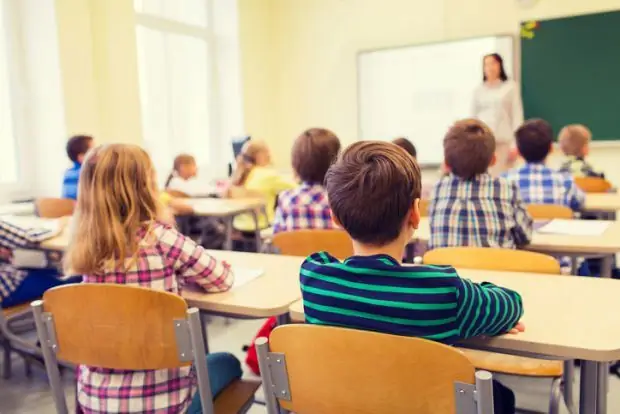
Education technology is a special system of methods, procedures and techniques of educational activities, where teachers hone their skills. Thus, the level of preparation of the teacher and educator is displayed. If his methods work in practice, it means that he has reached a certain level of skill
Cognitive research activities in the 2nd junior group: topics, goals and objectives
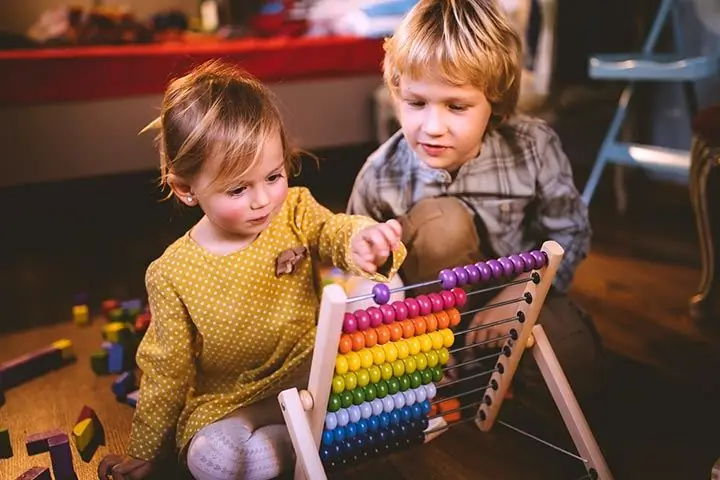
Child development always comes first for a loving and caring parent. And when the child is only 3-4 years old, parents always try to use all kinds of educational games for children 4 years old. A child at this age is already attending kindergarten. Therefore, the development of cognitive and research activities of preschoolers ensures the continuity of the goals of the family and kindergarten
The concept of spiritual and moral education: definition, classification, stages of development, methods, principles, goals and objectives
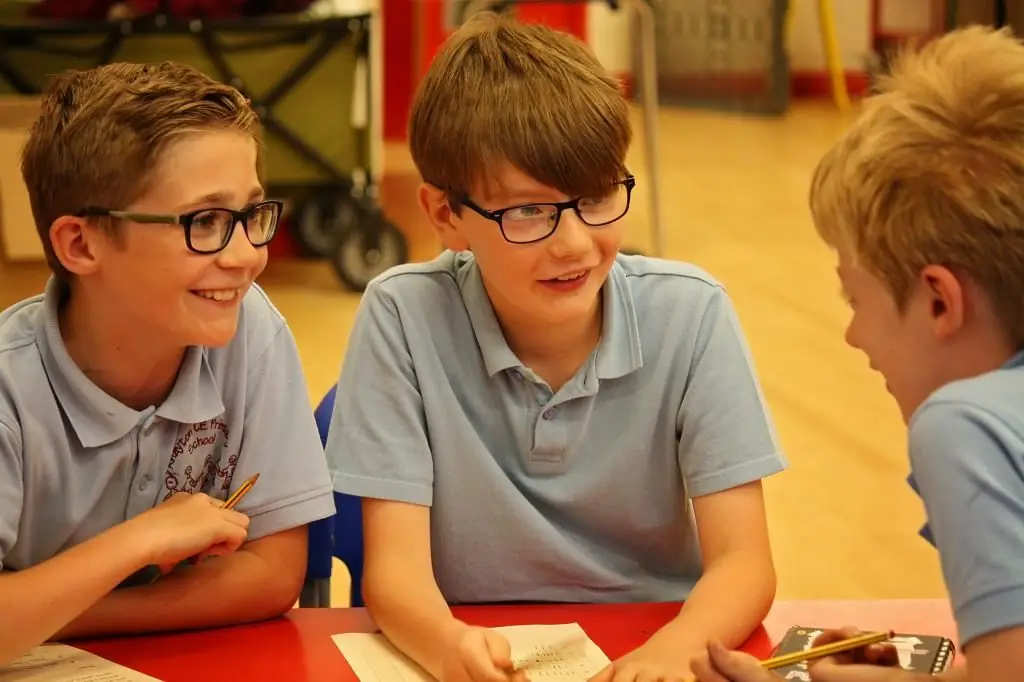
Definition of the concept of spiritual and moral education, ways of developing the education system and its main sources. School activities and development outside of school, the influence of family and close circle
Finger gymnastics for the older group: types, names, goals, tasks, rules and techniques for doing exercises by children
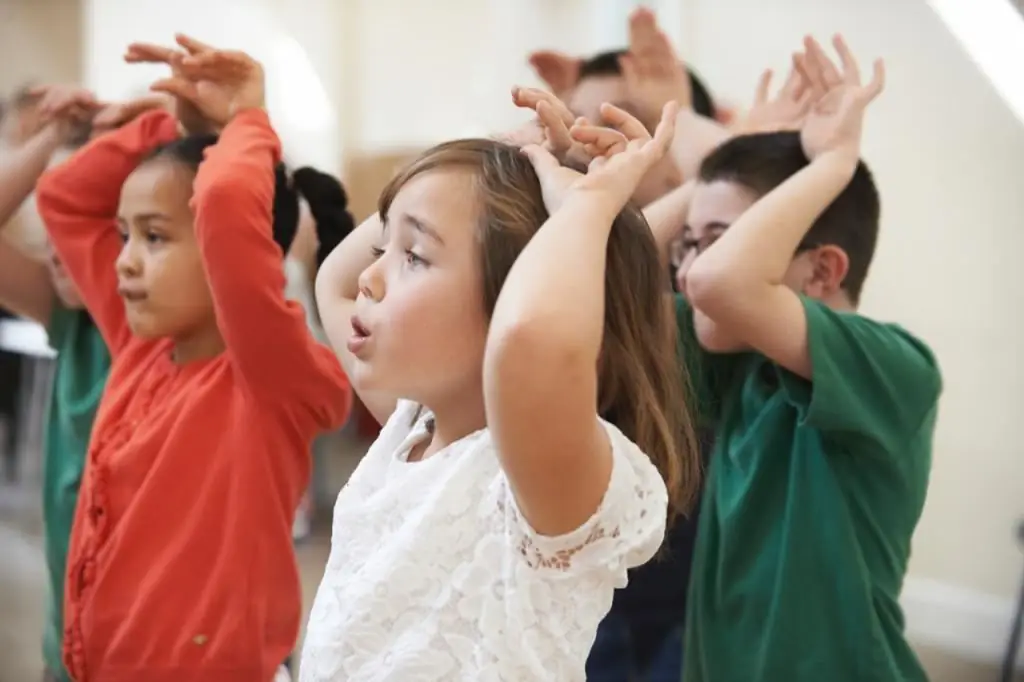
Finger gymnastics is a set of game exercises based on the staging of texts of varying complexity (poems, nursery rhymes, stories, etc.) with the help of fingers. Let's see why finger gymnastics is so good and useful for children of the older group

